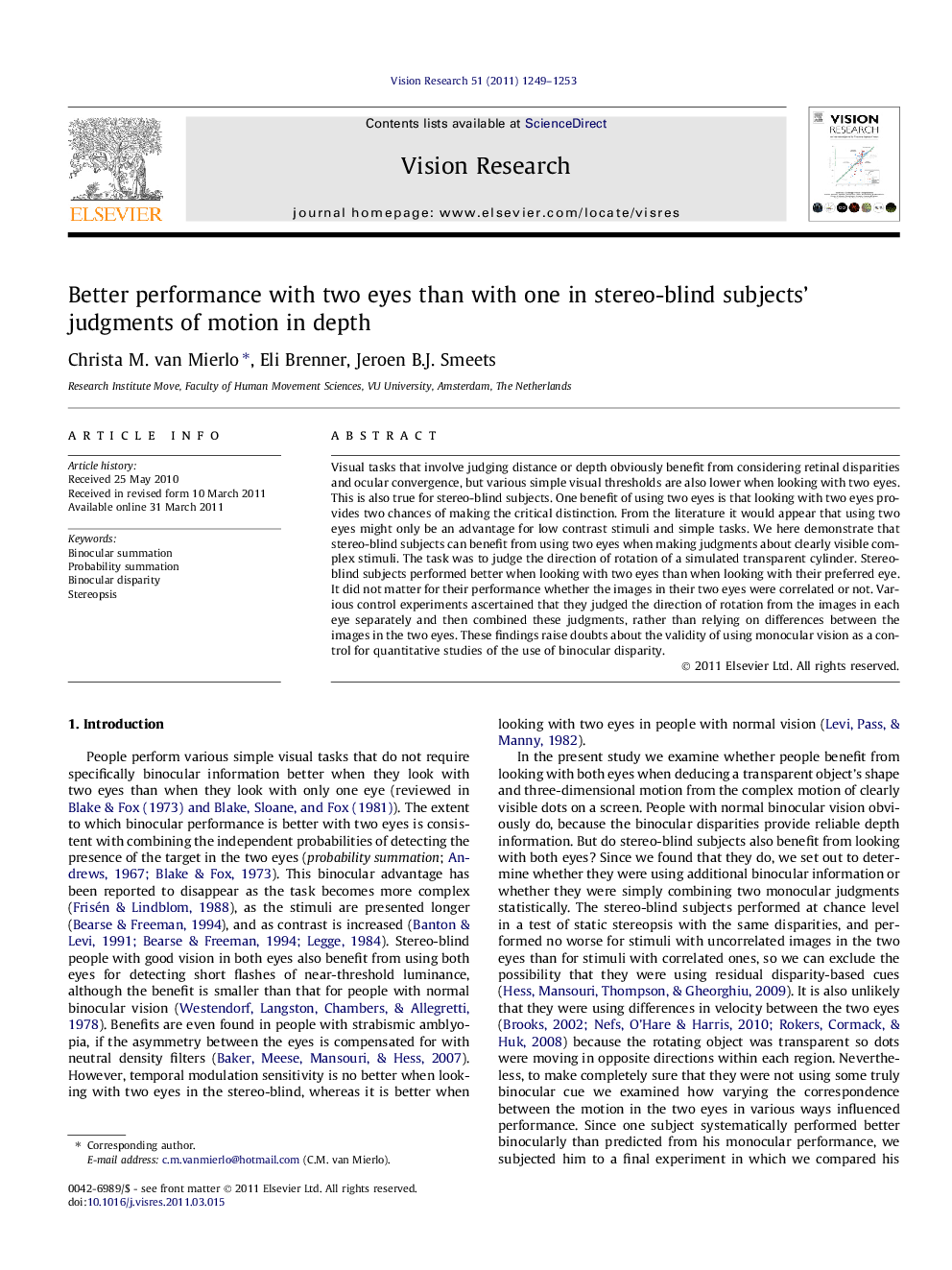| Article ID | Journal | Published Year | Pages | File Type |
|---|---|---|---|---|
| 6203789 | Vision Research | 2011 | 5 Pages |
Visual tasks that involve judging distance or depth obviously benefit from considering retinal disparities and ocular convergence, but various simple visual thresholds are also lower when looking with two eyes. This is also true for stereo-blind subjects. One benefit of using two eyes is that looking with two eyes provides two chances of making the critical distinction. From the literature it would appear that using two eyes might only be an advantage for low contrast stimuli and simple tasks. We here demonstrate that stereo-blind subjects can benefit from using two eyes when making judgments about clearly visible complex stimuli. The task was to judge the direction of rotation of a simulated transparent cylinder. Stereo-blind subjects performed better when looking with two eyes than when looking with their preferred eye. It did not matter for their performance whether the images in their two eyes were correlated or not. Various control experiments ascertained that they judged the direction of rotation from the images in each eye separately and then combined these judgments, rather than relying on differences between the images in the two eyes. These findings raise doubts about the validity of using monocular vision as a control for quantitative studies of the use of binocular disparity.
⺠Stereo-blind people benefit from using two eyes when judging rotation of a transparent cylinder. ⺠They sum probabilities of expansion across eyes, rather than using truly binocular information. ⺠Thus monocular vision might not be a valid control for quantitative studies of binocular disparity.
